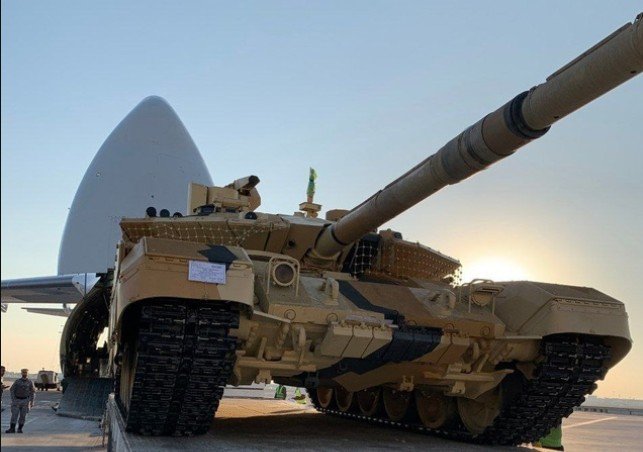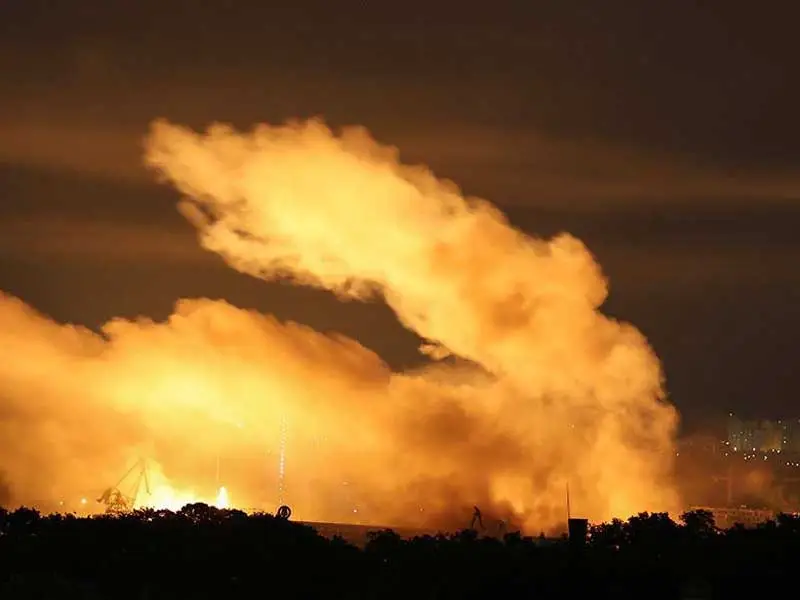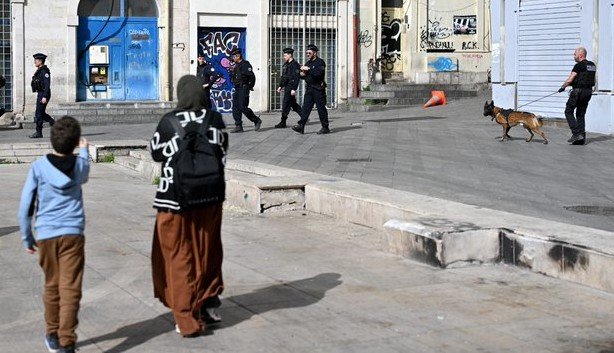
The latest development of mortars, the Slovak self-propelled AM120 introduced
The article will cover some news from the field of mortar development from the beginning of 2025. These weapons were the most requested item by the Ukrainian troops, mainly in the form of self-propelled mortars of 120 mm caliber, currently their combat deployment is complicated by the effective action of kamikaze drones and, as far as Ukraine is concerned, by problems with the quality and availability of ammunition.
1. Slovak self-propelled mortar AM120 was presented at IDEX 2025 in Abu Dhabi
The AM120 developed by ZŤS-Špeciál debuted at the IDEX 2025 exhibition. The AM120 was mounted on a Tatra 815-7 6×6 chassis and is designed for rapid deployment in challenging environments. Its robust design includes a Puma L2 Long armored cabin, which provides increased protection for the crew. The weapon integrates an automated turret that allows remote control from the vehicle cabin, with a backup operator station built into the turret. This feature allows for effective fire control without the crew having to leave the vehicle.
Armed with a 120 mm mortar, the system can fire at targets with a minimum effective range of 504 meters and a maximum of 8,600 meters. The system’s automated loading mechanism allows for a rate of fire of 18 to 20 rounds per minute. With an onboard carousel that can carry up to 60 artillery shells, the AM120 is able to maintain operational readiness without the need for frequent ammunition replenishment.
The mortar has an elevation range of 40° to 80° (elevation), with full 360° survey capability, allowing for high flexibility in targeting. The integration of the fire control system from the Slovak company Kerametal ensures precise targeting and operational reliability, which makes the AM120 an asset to modern armed forces. According to some observers, interest in this system is expected on the international arms market, also due to the favorable unit price of 1.5 million to 2 million USD, which makes the AM120 a competitive combination of performance, automation and affordability.
Foreign report on the AM120 mortar:
2. Russians captured Ukrainian 82mm artillery mines filled with amatol
In reality, this will be more of an effort by Russian propagandists to recycle the success in capturing the city of Velika Novosilka and the surrounding area, where a large amount of weapons, ammunition and other military equipment was captured. And to place it in the context of reports of non-functional 120mm artillery mines of Ukrainian production. The point is that the 82 mm mines found in warehouses around the city, specifically the O-832DU AT50 type, were supposed to be filled with amatol. Amatol is a mixture of ammonium nitrate and TNT in various proportions, where the numerator of the fraction indicates the percentage of nitrates and the denominator indicates TNT. For example, AT-50 in the designation of the captured mines will probably be the abbreviation AT-50/50. During the First and Second World Wars, amatol was considered a substitute explosive to compensate for the shortage of classic explosives.
In reality, however, this did not prevent amatol from being used quite prominently, especially during the Second World War. For example, the obsolete destroyer HMS Campbelltown was sacrificed by the British when it crashed into the door of the dry dock in Saint Nazaire, the timed explosion was then provided by 24 Mark VII depth charges filled with a total of 4.1 tons of amatol. Similarly, 4 tons of amatol were contained in the ejection charges of British X-class mini-submarines that were used in the attack on the German battleship Tirpitz anchored in a Norwegian fjord.
The Germans filled both V-1 flying bombs and V-2 ballistic missiles with amatol. Amatol’s reputation as a substitute explosive dates back to World War I, when it was invented by the British during the Grenade Crisis of 1915. So, if the Ukrainian mines are otherwise in order, it should not be such a problem that they are filled with amatol and not with some modern explosive with a high TNT equivalent. Such mines filled with amatol can still be used by the Russians as a substitute charge for ground-based kamikaze drones, for bombing flying drones, or detonated using surplus rocket motors from RPG-7 armored vehicles. Overall, however, the effectiveness of 60 mm and 81/82 mm mortars is increasingly questionable.
The Russians have adopted the practice of using 82mm RPG-7 anti-tank mines, cumulative anti-tank grenades end up on FPV drones, and 82mm mines can then be attached to the engines:
The use of artillery mines on land kamikaze UGVs:
It is clear that the Russians are trying to use the captured 82 mm mines to put pressure on Ukrainian President Zelensky in connection with the problem of supplying Ukrainian troops with 120 mm mines. This was sufficiently described in the previous article.
Currently, a possible presidential candidate, Arestovich, uses the problem of 120 mm artillery mines in his communication and, in relation to President Zelensky, states that if the state defense order plan for him as the president of Ukraine were fulfilled by 45% in the third year, he would shoot himself on the spot. Of course, he means both the waste in the form of unusable 120 mm mines and the possibility of interruption of some weapons supplies from the West.
In this regard, the efforts of the Ukrainian company PARS, which, among other things, was supposed to develop a 120 mm towed mortar “Chumak”, seem rather symbolic. In principle, it is not supposed to be a new weapon, the idea was to develop a towed chassis that allows the weapon to be deployed/collapsed within one minute and, using a digital system, to start firing in an automated aiming mode within 30 seconds of deployment with twice the accuracy of analog systems. The question is also whether, in the case of setting up mass production of a promising weapon, it will be possible to achieve the necessary quality, with which Ukrainian 120 mm mortars have had serious problems in the past.
3. Alakran mortars now also on the Flyer 72 chassis
During the IDEX 2025 exhibition, which also featured the Slovak AM120 mortar, the Spanish company Milanion NTGS demonstrated its Alakran mortar on the Flyer 72 chassis of the American company General Dynamics. It is a light 4×4 airborne vehicle, a version of which is used by the US Special Operations Command SOCOM under the designation M1288 GMV 1.1, or by the US ARMY as the M1297 AGMV. The lightweight design of the Alakran mortar generally allows it to be mounted on optional light tactical vehicles.
The weapon has a patented recoil absorption and barrel cooling system, which allows continuous high-speed firing without the risk of barrel overheating, and can maintain a rate of fire of up to 16 rounds per minute. The Alakran is also equipped with a fully digital fire control system with an automatic aiming mechanism. It has an advanced inertial and satellite navigation system. The lightweight design of both the weapon and the chassis allows it to be dropped from helicopters and aircraft, ensuring that even special forces and rapid reaction units can have mortar support available. The Alakran is one of the lightest 120 mm mortars, capable of firing up to eight rounds and repositioning in 90 seconds, which increases survivability in the face of enemy counter-battery fire. The system carries up to 50 rounds for the 120 mm variant, while the 81 mm mortar has a supply of up to 80 rounds. The dual-bearing design improves terrain compatibility and firing accuracy.
The Flyer 72 is one of many other lightweight chassis on which the Alakran mortar can be mounted. In principle, this is nothing new, for example, the relatively progressive Algerian armed forces had the Chinese 120 mm W86 gun on locally assembled Mercedes G chassis long before the need for highly mobile mortars on the Ukrainian battlefield in 2022 became apparent. With the spread of drones, what was potentially a key weapon in 2022 may be obsolete as early as 2025. For drones controlled by artificial intelligence, any artillery systems will be a priority target. If we ignore the potentially greater range, especially with guided shells of modern Russian artillery-mortars, drones already pose a serious problem today, which neither armor nor the high speed and maneuverability of the classic mortar platform solve.
Report on the Alakran mortar on the Flyer 72 vehicle:
A Russian kamikaze drone destroys an Alakran mortar on a different chassis on the Ukrainian battlefield Lancet:
4. Germany and Finland’s Patria sign agreement for mortar version under CAVS program
The contract worth approximately EUR 50 million covers the CAVS NEMO and CAVS Command and Control Mortar variants. These new versions are to be integrated with German mission systems and will be qualified to meet the operational requirements of the Bundeswehr. The NEMO variant features Patria’s 120 mm turret mortar system mounted on a Patria 6×6 armored vehicle. Jukka Holkeri, Executive Vice President of Patria’s Global Division, welcomed the agreement with Germany as a significant step for the program. He emphasized that the new 120 mm turret mortar system could attract further interest from potential new CAVS (Common Armoured Vehicle System) bidders. Development and qualification will take place in cooperation with German industrial partners, with future series production including KNDS, FFG and JWT. With over 800 Patria 6×6 vehicles ordered and over 200 delivered, the program remains open to other European countries with matching needs.
Report on the joint development of the CAVS NEMO mortar:
5. Turkey showcases ASELSAN ALKAR 100/81 81 mm mortars along with a version of the ALKAR 110/81 electronic fire control system
The ALKAR 100/81 is a turret-mounted 81 mm mortar system with a recoil mechanism, automatic fire control system and inertial navigation system. It has a range of 100 to 5,800 meters, can fire in less than a minute and change position in less than ten seconds. It is compatible with all types of 81 mm mortar ammunition and its integration with command and control systems makes it a versatile solution for mobile fire support. At the IDEX 2025 exhibition, it demonstrated its improved electronic fire control system ALKAR 110/81, which is similar to the ALKAR 110/120 system for the 120mm ALKAR 100/120 mortar.
Turkish report with English subtitles on ALKAR mortars issued ahead of the IDEX 2025 exhibition:



Erik Simon


















